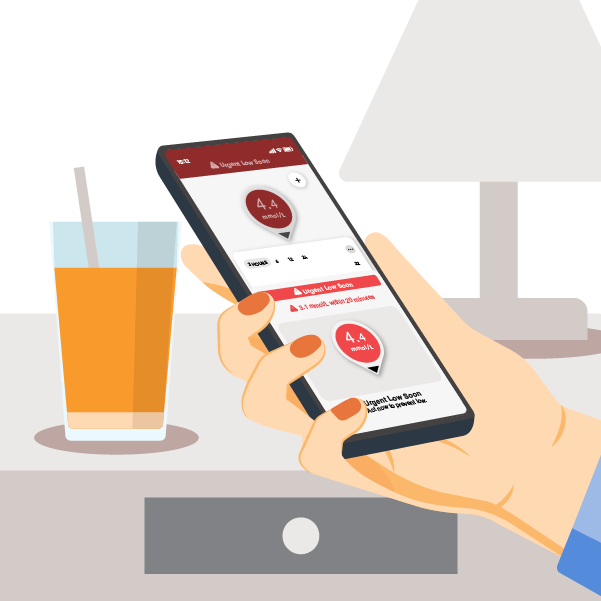Latest Data Shows Dexcom G7 with Urgent Low Soon Alert Reduces Hypoglycemia

The 2023 Preechasuk study of adults with type 1 diabetes (T1D) who switched from an intermittently scanned continuous glucose monitoring (isCGM) device to Dexcom G7 real-time Continuous Glucose Monitoring (rtCGM) System with Urgent Low Soon alert showed improvement in time below range (TBR) and reduced glucose variability when using rtCGM.1
Predictive Urgent Low Soon Alert Improves TBR1
The 12-week study involved 29 adult participants with T1D. Participants were originally using FreeStyle Libre 2 (FSL2) with high and low optional alerts only. They were switched to the Dexcom G7 rtCGM System with the predictive Urgent Low Soon alert for the duration of the study.
The data demonstrated improvement in hypoglycemia occurrences with the use of rtCGM. After switching to Dexcom G7, participants spent less time in hypoglycemia below 3.9 mmol/L (3.0 [1.0,5.0] vs. 2.0 [1.0,3.0] %, p=0.006).
The study also noted the benefits of the Urgent Low Soon alert in Dexcom G7, which can provide users with a predictive alert up to 20 minutes before they experience a serious low under 3.1 mmol/L. Wearers were able to take proactive measures, resulting in improved outcomes and more effective diabetes management.
The data showed that while FSL2 provides the option of both low and high threshold-based alarms, only 50% of study participants chose to use this function. In contrast, 90% of participants chose to use the Urgent Low Soon alert (as well as the low alert function) with Dexcom G7.
Using rtCGM is Effective in Reducing Glucose Variability
In addition, study results demonstrated that rtCGM was more effective than isCGM in reducing glucose variability (%CV).
A greater proportion of study participants using Dexcom G7 achieved the desired marker of CV<36% as per the International Consensus:1 24.1% of those in isCGM compared with 37.0% in rtCGM (p=0.38). After switching to rtCGM, participants spent less time in hypoglycemia below 3.9 mmol/L and had lower %CV (isCGM 39.3 ± 6.6% vs. rtCGM 37.2 ± 5.6%, P = 0.008), a significant difference of -2.1.
rtCGM With Urgent Low Soon Alert Improves Outcomes For T1D Individuals1
The latest research study provides encouraging results for adults living with T1D who are considering switching to the Dexcom G7 rtCGM System to reduce time spent in hypoglycemia and glycemic variability.
Dexcom G7 with the predictive Urgent Low Soon alert surpasses other similar CGM devices in terms of accuracy and patient ease-of-use. Compare the difference between Dexcom and FSL2 to see what would work best for your patients.
You can request a sample to learn how Dexcom G7 predictive alerts could benefit individuals living with T1D and improve clinical outcomes.
1 Preechasuk L, Avari P, Oliver N, Reddy M. Switching from Intermittently Scanned Continuous Glucose Monitoring to Real Time Continuous Glucose Monitoring with a predictive urgent low soon alert reduces exposure to hypoglycaemia. Diabetes Technol Ther. 2024 Apr 9. https://doi.org/10.1089/dia.2023.0434
2 Battelino T, Danne T, Bergenstal RM, et al. Clinical Targets for Continuous Glucose Monitoring Data Interpretation: Recommendations From the International Consensus on Time in Range. Diabetes Care. 2019;42(8):1593‐1603. doi:10.2337/dci19‐0028
MAT-3645 V1.0
